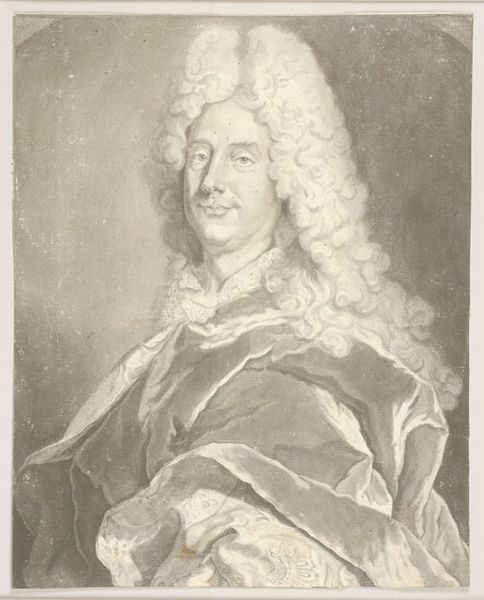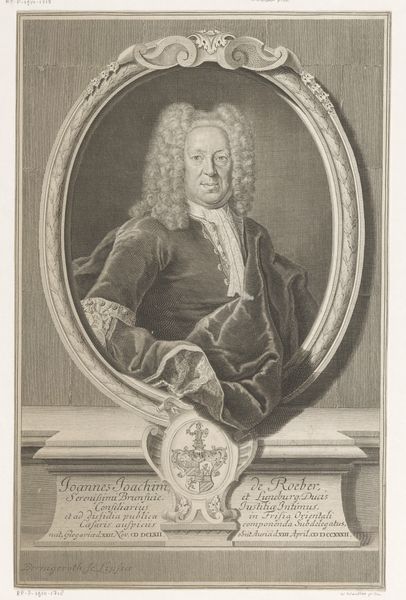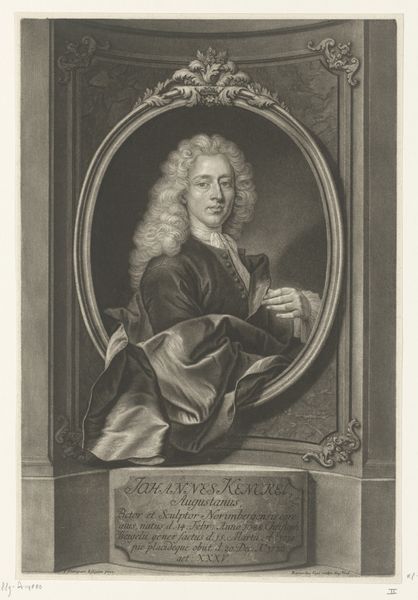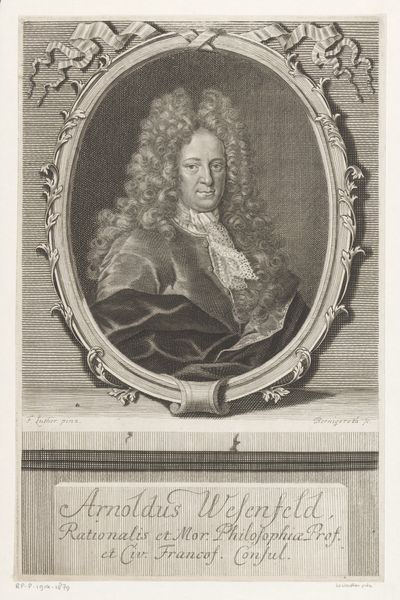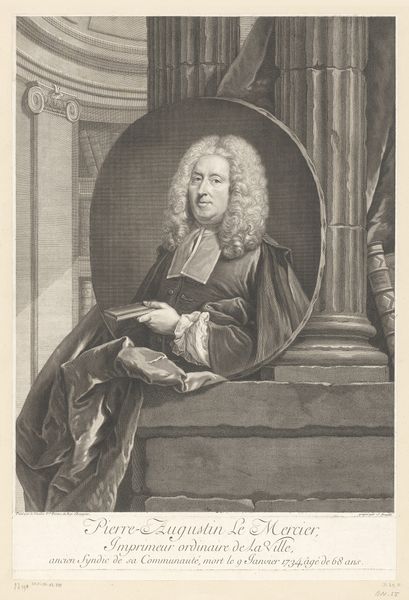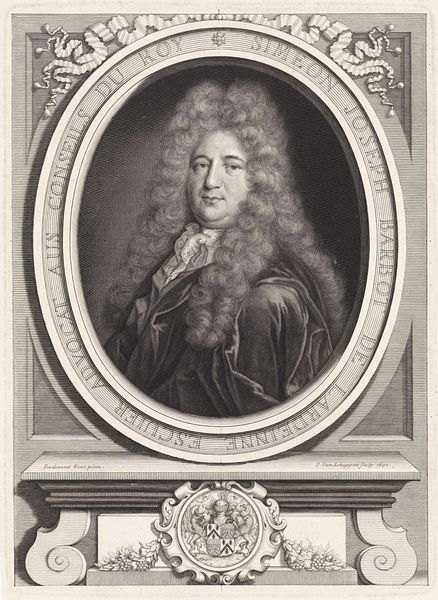
print, engraving
#
portrait
#
baroque
# print
#
history-painting
#
engraving
Dimensions: height 355 mm, width 252 mm
Copyright: Rijks Museum: Open Domain
Editor: This is a print from 1730, "Portrait of Nicolas de Largillière" by Charles Dupuis. The detail achieved through the engraving is striking. What aspects of the portrait stand out to you? Curator: Let’s consider this print within its material and social context. Engravings like this circulated images and ideas widely. Dupuis, through the labour-intensive process of engraving, transformed Largillière’s painted image into a commodity. This process democratizes access. Notice how the engraving captures the texture of his wig, his velvet coat; how the burin translates paint into lines, replicating luxury for mass consumption. Editor: So, you're saying it’s about making art accessible? Curator: Precisely. Engravings challenge the preciousness associated with singular oil paintings. What were previously aristocratic artworks become obtainable objects for a broader audience. Consider also the inscription citing Largillière's role as "Peintre ordinaire du Roi," which connects artistic skill with Royal authority. It emphasizes production under patronage, where art-making served powerful figures. How might we connect this to the idea of labour? Editor: I guess it shifts our perspective, from thinking about artistic genius to acknowledging the labor involved in both creating the original portrait and reproducing it as a print. I see the production process as part of the meaning of the piece now. Curator: Exactly. Considering materials and methods moves our understanding beyond aesthetics, connecting art directly with economic and social structures. Understanding the material production enables deeper interpretations of value and visibility in 18th-century art. Editor: I hadn’t thought about it that way. I see how important it is to consider production when talking about prints. Thanks!
Comments
No comments
Be the first to comment and join the conversation on the ultimate creative platform.
